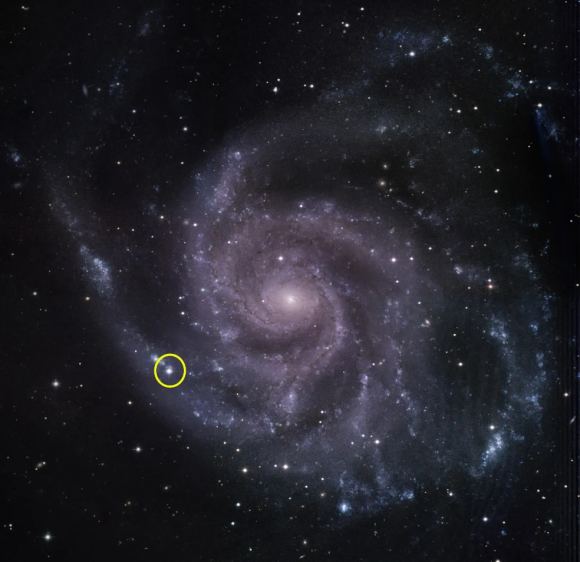SPHEREx Space Telescope: Six Must-Know Facts About NASA’s Newest Mission
NASA’s SPHEREx space telescope promises to be a revolutionary observatory, offering a vast, all-encompassing view of the cosmos. With its ability to map the universe in 102 infrared colors, SPHEREx aims to provide insights into cosmic phenomena such as the inflationary period after the Big Bang, the distribution of galaxies, and the presence of life’s building blocks like water and carbon dioxide. This mission will complement existing space telescopes like Hubble and Webb by providing broad-spectrum data, which will enable more detailed observations of identified objects. SPHEREx’s contributions will shape our understanding of both the cosmic past and future, making it one of the most significant space exploration endeavors to date.
Summary
- SPHEREx Telescope will provide comprehensive infrared maps of the entire sky, observing more than 450 million galaxies.
- It will study cosmic inflation, a key moment in the universe’s expansion after the Big Bang, enhancing our understanding of large-scale universe structure.
- The telescope will help to measure the total glow from all galaxies, including distant, faint, or small ones, filling in gaps left by previous observations.
- SPHEREx will search the Milky Way galaxy for essential molecules like water ice and carbon dioxide in regions where stars and planets are forming, offering clues about the origin of life.
- The observatory will use spectroscopy to create the most colorful all-sky map ever, giving a 3D visualization of galaxies and the chemical compounds within them.
- SPHEREx’s cone-shaped design will keep it cold enough to detect faint infrared signals, using a passive cooling system to protect the instruments.
Introduction to SPHEREx
The SPHEREx mission is one of NASA’s most anticipated space telescopes set to revolutionize our understanding of the universe. Slated for launch on February 27, 2025, from Vandenberg Space Force Base, this observatory will be unlike any other, mapping the entire celestial sky in 102 infrared colors. Its mission is focused on exploring the origins of the universe, the formation of galaxies, and the essential ingredients of life, such as water ice and carbon dioxide, found in the Milky Way. To fully appreciate the significance of this mission, let’s dive into six essential facts about SPHEREx.
1. SPHEREx Will Shed Light on Cosmic Inflation
One of the most intriguing phenomena that SPHEREx will help unravel is cosmic inflation—a brief but critical period in the early universe. In the first billionth of a trillionth of a trillionth of a second after the Big Bang, the universe expanded rapidly by a trillion-trillionfold, reaching its current size. This inflationary period set the foundation for the large-scale distribution of matter we observe in the universe today.
By mapping more than 450 million galaxies, SPHEREx will provide a detailed look at this cosmic event, helping scientists understand the physics that caused the universe to grow at such a mind-boggling rate. The spatial distribution of galaxies mapped by SPHEREx will offer critical clues to the underlying mechanics of inflation and give us insight into how the early universe evolved.
This will be the first time an observatory has provided such a comprehensive map of cosmic inflation, laying the groundwork for future research in cosmology.
2. The Observatory Will Measure the Collective Glow from Galaxies
Previous efforts to estimate the total light output of all galaxies in the universe have been based on observations of individual galaxies. However, many galaxies are too small, too faint, or too distant to be observed by current telescopes. SPHEREx is designed to take a novel approach: instead of observing individual galaxies, it will measure the combined glow from all galaxies. This will offer a more complete picture of the universe’s cosmic light, from the very first stars to present-day galaxies.
This comprehensive measurement will help fill gaps in our knowledge, as it includes the light emitted by galaxies that previous telescopes like Hubble and Webb may have missed. The total light output measured by SPHEREx will allow scientists to better understand the evolution of galaxies and their role in the universe’s broader illumination.
3. Searching for Life’s Building Blocks in the Milky Way
One of the most exciting aspects of SPHEREx’s mission is its ability to search for the key ingredients for life, such as water ice and carbon dioxide, in the Milky Way galaxy. These molecules are found in cold interstellar clouds of gas and dust, which are star-forming regions where planets can also form. Without these basic compounds, life as we know it would not be possible.
Using its infrared spectroscopy, SPHEREx will identify and map the locations and abundance of these molecules across the galaxy. This will provide valuable insight into the potential for life in other star systems, particularly in planets that may be forming in regions rich in these vital elements.
By mapping molecular clouds like Rho Ophiuchi, SPHEREx will advance our understanding of the conditions required for life to form, allowing scientists to further explore the possibility of life beyond Earth.
4. SPHEREx Adds Unique Strengths to NASA’s Space Telescope Fleet
NASA already boasts advanced space telescopes such as Hubble and Webb, which have provided stunning images and valuable data about distant galaxies, stars, and planets. However, these telescopes have focused on observing individual objects at high resolution. SPHEREx, on the other hand, is designed to capture the big picture—mapping the entire sky in infrared wavelengths.
With its ability to provide an all-sky view, SPHEREx complements existing telescopes by identifying objects of interest for more targeted investigations. After SPHEREx maps the sky, telescopes like Hubble and Webb can zoom in on specific targets for deeper analysis. This partnership between SPHEREx and other space telescopes will create a comprehensive view of the universe.
5. The Most Colorful All-Sky Map Ever
SPHEREx will create the most colorful all-sky map in history. Using infrared light, which is invisible to the human eye, the observatory will capture wavelengths that are ideal for studying stars, galaxies, and other cosmic objects. Through spectroscopy, SPHEREx will split light into its component colors, much like a prism splits sunlight into a rainbow.
This will allow scientists to analyze the chemical composition of distant galaxies and stars, measure their distances, and even track the history of the universe’s light output. The resulting map will provide a 3D representation of the cosmic structure and help us understand how the universe has evolved over billions of years.
6. The Cone-Shaped Design Helps It Stay Cold and See Faint Objects
SPHEREx’s design incorporates a passive cooling system to keep the spacecraft’s infrared detectors at temperatures as low as -350°F (around -210°C). This is necessary to prevent the telescope from emitting its own infrared light, which could overwhelm the faint signals from distant cosmic objects.
The spacecraft’s unique cone-shaped design helps protect the telescope from heat by blocking sunlight and the warmth of Earth. The photon shields, which are part of this design, keep the telescope cool and allow it to operate at optimal conditions, ensuring it can detect even the faintest of cosmic signals.
The SPHEREx space telescope represents a massive leap forward in our understanding of the universe. By mapping the entire sky in 102 infrared colors, SPHEREx will help solve some of the most fundamental questions in cosmology, astronomy, and the search for life beyond Earth. It will complement existing space observatories by providing large-scale data that can guide more detailed studies of individual objects, thus contributing to a holistic understanding of the cosmos.
The telescope’s unique ability to observe cosmic inflation, measure the collective glow of galaxies, and search for the building blocks of life in the Milky Way, will add essential pieces to the puzzle of our universe’s history and its potential for sustaining life.
For more information on this groundbreaking mission, visit NASA’s official page for SPHEREx.
References
- NASA SPHEREx mission: Phys.org
- NASA Launch Plans: Phys.org – SPHEREx Sky-Mapping Mission
- Infrared Light in Astronomy: Phys.org – Infrared Light
- Telescope Technology: Phys.org – Telescope Innovations

























